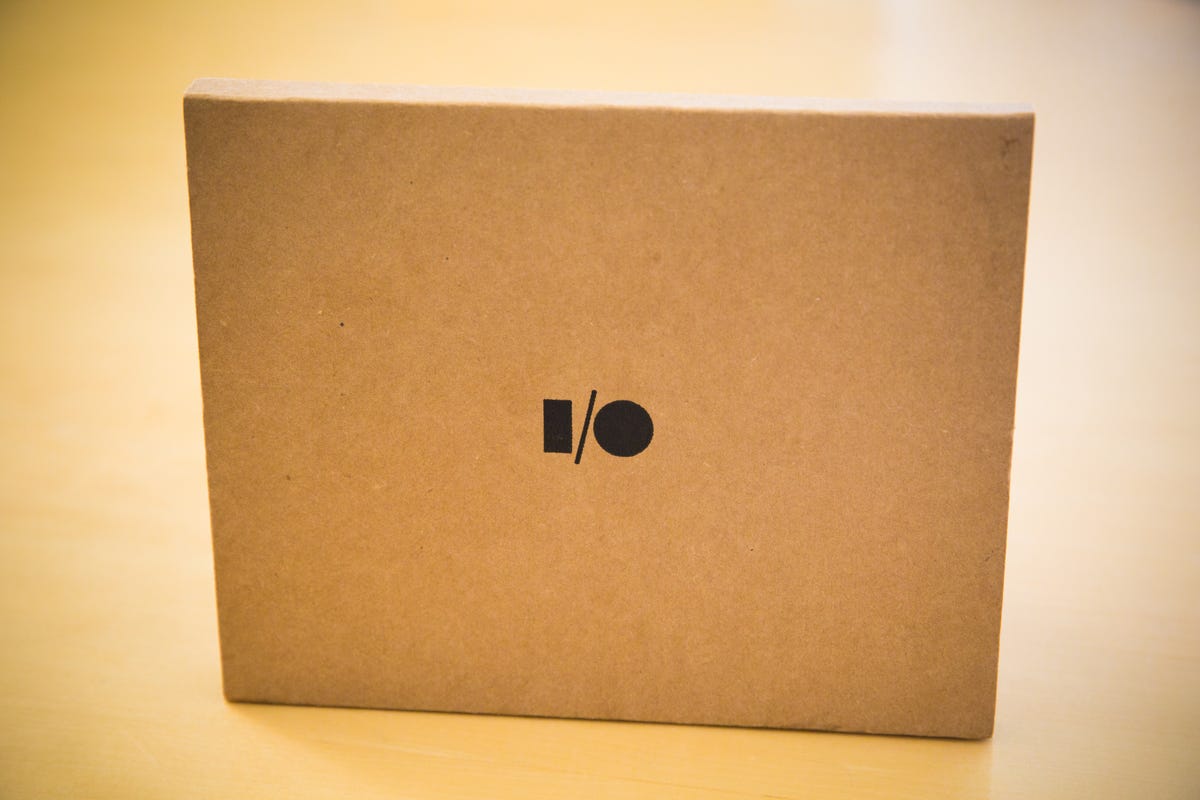
Google Cardboard
Handed out as part of Google's annual goodie bag for attendees of the I/O developers conference in San Francisco, the Cardboard package came with all the necessary materials to easily assemble a makeshift virtual reality headset.
Using an Android app called Cardboard, a simple smartphone can be placed inside the case and used to run low-key VR experiments.
Google has an entire developers page dedicated to the project, born of two employees at the Google Cultural Institute in Paris, that includes schematics, a materials list, and the project's open software development kit.
Unboxing
Once unfurled, it's easy to see that Google designed its Cardboard package to roll together with minimal effort and no additional tools.
Seen here are all the materials, which Google says you can buy for roughly $20. This includes the $10 lens kit, about $7 worth of off-the-shelf magnets, $3 of Velcro, a rubber band, and a $1.50 near-field communication sticker tag. The cardboard could easily be recycled from a box.
Foldable virtual reality
Tearing off the extra slab of cardboard means you're ready to construct the headset in a simple series of motions.
To get the appropriate material consistency if you're making your own headset, Google recommends using E Flute variety cardboard, a distinct kind of thickness for corrugated paper. Or a good alternative is a pizza box. Order an extra large, the company says.
Affixing the lens kit
After vertically positioning the slice of cardboard that holds the lens kit, and folding it over once, you fasten it place via precut slots.
For those who want to cut out their own cardboard, Google released the design files online (PDF).
Taping up
A tiny slip of paper covers a section of adhesive that will fasten the left flap of the phone mount to the body.
Building Cardboard
Once the left flap is fastened, the neodymium ring magnet -- the gold, donut-shaped one -- should be slide-able from top to bottom.
This is integral to using Cardboard, as the magnets are what let you essentially trigger a tap on the touch screen to select different VR experiences.
Held together via Velcro
Google says only $3 of Velcro and accompanying adhesive will let you fully seal the phone mount and easily open it back up to swap your Android smartphone in and out.
Nexus 5 VR
Here at CNET we used a Nexus 5 smartphone for Cardboard, but Google says any device running Android 4.1 Jelly Bean will do.
The NFC sticker tag attached to the cardboard housing should launch the app immediately upon placing your phone inside. If you have trouble, launching the app before you close the housing works just fine.
Firm fit
Before you fasten the Velcro down, once your phone's inside Cardboard, make sure to press the phone firmly against the walls of the board that hold it in position in front of the lenses. The better positioned the phone is, the easier it will be to look through and get a crisp image.
Rubber band
A rubber band can be used to keep the phone in place. Be careful though, overeager VR activity could dislodge the device and force the phone to fall out of the cardboard casing.
Getting into focus
Finding the proper lens kit is the trickiest part, says Google. The company recommends a 45mm focal distance, but it depends on your eyesight.
Google used biconvex lenses from a company called Durovis, found on Amazon, to prevent the edges of the images on the screen from distorting. Unfortunately, it looks like the product, thanks to Google, is currently unavailable.
VR at last
With your headset is finished, just hold it up to your eyes -- sorry, no eyeglasses allowed.
Using the slide-able magnet on the side, which interacts with an internal ceramic disk magnet, you can select between Google's various VR demos.

